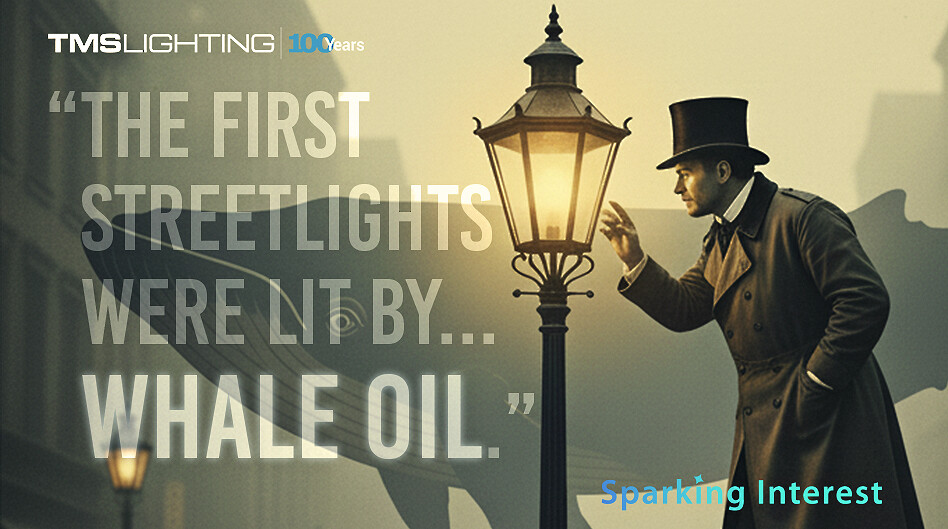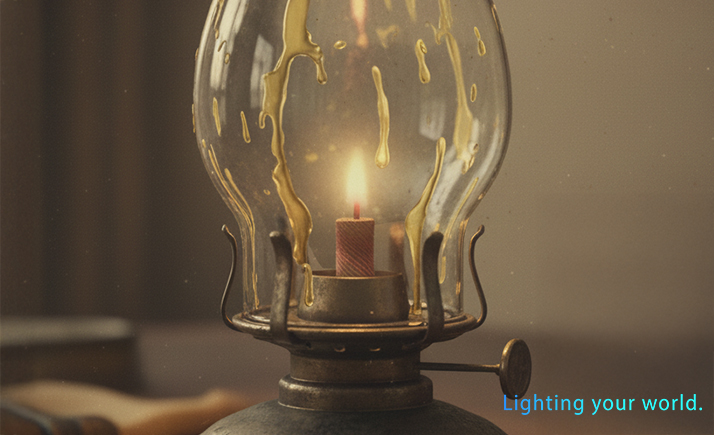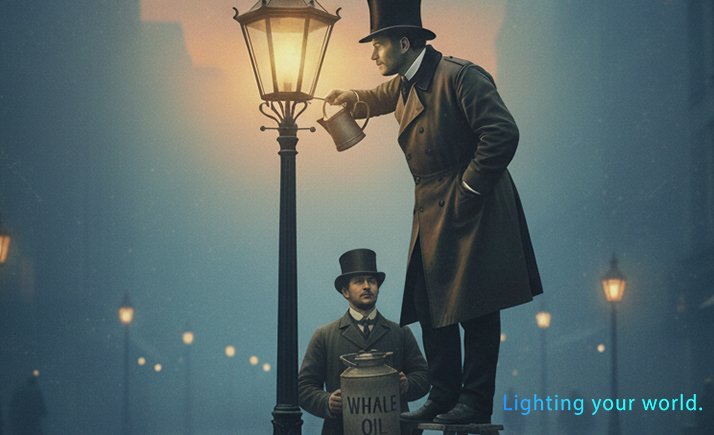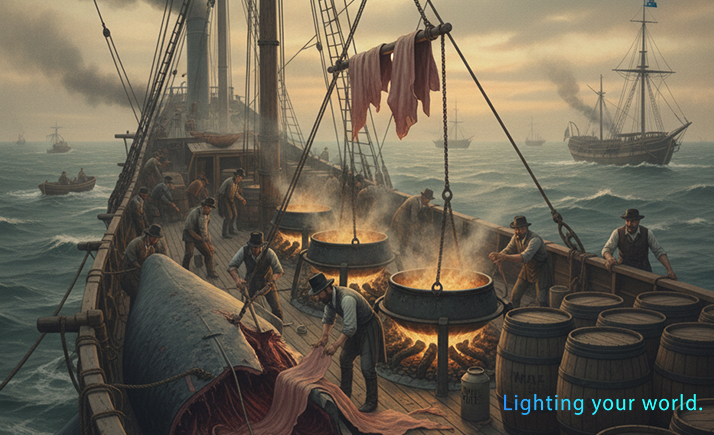
THE 'SPARKING INTEREST' BLOG

WHAT THE WHALE TAUGHT THE WATT
“WHEN THE STREETLIGHTS WERE LIT BY WHALES.”
The lamp-lighter arrives, climbs a ladder, pours in oil from a barrel, trims the wick, and finally, strikes a match.
The flame steadies, casting a soft halo...
And what is that fuel? Not kerosene, not gas, and NOT electricity (not yet).
Instead?
Whale oil! And LOTS of it.
Yes! In many cities in the 18th and early 19th centuries, the fire that lit the street was fueled by whales.
And the job of keeping those lamps bright?
Real people, real ladders, real oil drums — and some surprisingly tough inspection routines!
BUT WHY WHALE OIL?
What is “Whale Oil”?
It’s the oil obtained from the blubber or other fatty parts of whales.
-
According to Wikipedia, “Oil obtained from the blubber of whales … In the 1740s five thousand street lamps which burned whale oil were located in London.”
-
In colonial America, the earliest street lights used oil lamps burning oil from whales.
-
One museum noted that “Between 1800 and 1860, whale oil lamps … were considered ‘high tech’ lighting solutions.”
So, why turn to whale oil and not something else?
Because by comparison to candles, or other oils, whale oil burned brighter, cleaner, and more reliably.
Whale oil was the king of lamp fuels.

THE SCALE OAND THE JOB OF THE LAMP-LIGHTER (AND THE "INSPECTOR").
When you flick a switch today you give barely a thought to its source.
But in those days someone had to walk a route, carry oil, trim wicks, clean glass, climb ladders.
Often that person was called the Lamp Lighter.
So what would you call one of those whose job it was to make sure everything was lit?
“Whale-Oil Inspectors”?
Maybe “Lamp Supervisor,” “Lighting Inspector,” or “City Lamp Lighter/Trimmer.”
But perhaps the phrase “whale-oil inspector” (not historically widespread, but evocative).

WHY THIS MATTERS TO THE LIGHTING INDUSTRY TODAY.
Okay, fun trivia.
But why does this matter for a modern lighting-industry audience?
Here are a few take-aways worth reflecting on:
-
Evolution of fuel and technology: The story shows how lighting isn’t just about “Bulb vs. Lamp” — it’s about the fuel, the supply chain, the resource behind the light. In our era of LED's, smart lighting and renewable sources, it’s valuable to remember what earlier generations built with what they had and for us to be cognizant of the continuous evolution of our industry is ALWAYS doing.
-
Operational maintenance matters: The lamp-lighter/trimmer/inspector carried out daily duties: trimming wicks, cleaning glass, replacing oil. Similarly today—whether for street lighting networks, smart poles, sensors or fixtures—the “Last Mile” maintenance still defines performance and uptime. This history underscores that even “simple lighting” required skilled human work and, going forward, will still need a human touch and a human eye in the advent of Artificial Intelligence.
-
Resource constraints influence design: Whale oil was expensive and sometimes inconsistent, cities had to specify “Best Grade Whale Oil” and monitor how long a lamp burned, compared lamps in trials, and clean globes frequently. When a resource is constrained you OPTIMIZE around it. Today this translates to power budgets, environmental impact, and lifecycle cost.
-
Cultural and systemic lens: Lighting didn’t just change technology; it changed society. Street lighting extended the evening, altered crime patterns, and urban behaviour. The whale-oil phase reminds us that behind the switch to “Electricity” lay decades of innovation, iteration, and infrastructure.

A FINAL GLIMMER (PUN INTENDED).
By the mid to late 19th century the whale-oil era was drawing to a close: kerosene, gas, electricity.
But for decades, the public face of the street-light — the small flame in a glass globe — relied on an industrial ecosystem of whaling ships, oil-barrels, lamplighters with ladders, inspectors checking burn-times.
The story might sound quaint, but it carries lessons about how lighting infrastructure is shaped by fuel, by supply chains, by people, and by urban policy.
And if you ever cast your eye up at a historic lamppost and imagine an 1820's lamplighter climbing up with oil-jug and ladder, you’ll see not just a classic scene but a node in lighting history.